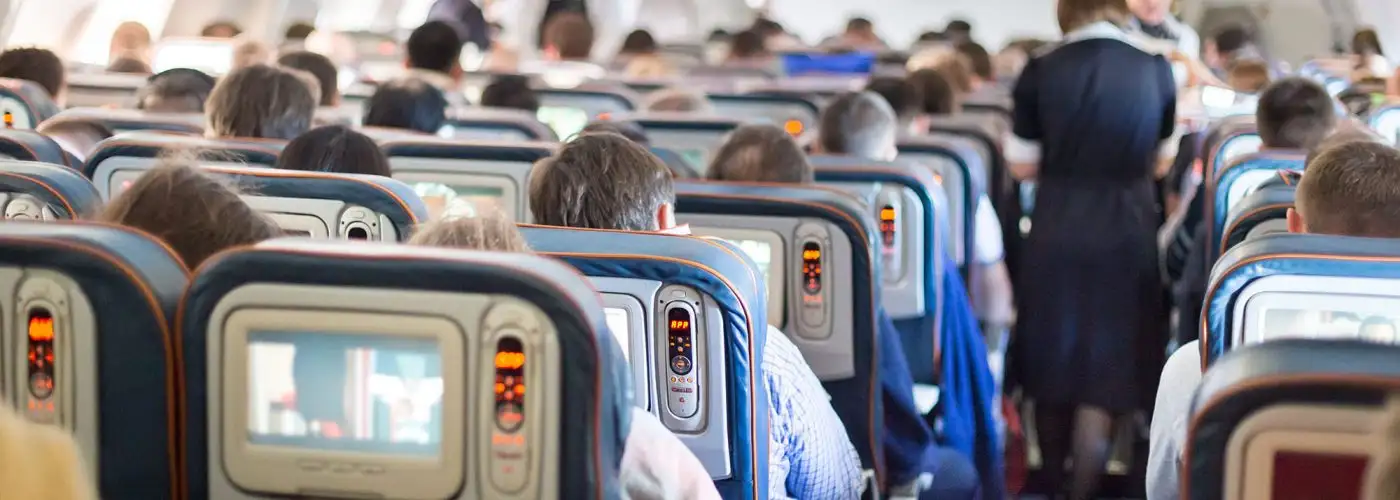You might have heard recently that Congress has decided your plane seat size should be regulated. That’s true. You may have also heard that it means your plane seat is going to get bigger. Here’s why that’s probably not true.
“Not later than one year after the date of enactment of this Act, and after providing notice and an opportunity for comment, the Administrator of the Federal Aviation Administration shall issue regulations that establish minimum dimensions for passenger seats on aircraft operated by air carriers in interstate air transportation or intrastate air transportation, including minimums for seat pitch, width, and length, and that are necessary for the safety of passengers.”
That’s the exact language in the final version of the FAA reauthorization Act of 2018, agreed to by House and Senate and sent to the President for signature. And that last-minute addition is more specific than the original bill, which required only that the FAA “study” the need for seat size regulation.
But before any people conclude that this means the government will mandate relief from today’s ever-tightening seat dimensions, they should consider four facts:
-The bill says the seating dimensions should be safe—not comfortable. The FAA is heavily involved in passenger safety, and the key safety metric they’ve set is the ability of passengers to evacuate a survivable crash within 90 seconds. Sufficient elbow room is not a key safety metric.
-Seats can’t realistically get any wider. The vast majority of airline seats on U.S. domestic flights are six-across in most coach cabins. The widths of those seats are limited by the widths of the cabins, with A320 planes being only a few inches wider than Boeing 737s. So any meaningful increase in seat width would require a fleet-wide switch of all 737s, and probably all 320s to switch to five-across seating, which would be a huge cut in plane capacity—and that’s just not going to happen. Current seats on wide-body planes generally also conform to the same dimensions.
-Seat pitch could improve a little, but probably won’t. Removing one or two seat rows out of a typical coach cabin to gain an inch or two of pitch would not be as drastic as requiring five-across seats (which, as I said, is even more unlikely). The FAA could feasibly set a minimum above today’s domestic minimum of 28 inches, but that’s unlikely given the obvious negative impact it would have on low-fare lines. Any substantial dimension changes would likely have a negative impact on airfare affordability.
-The FAA has previously stated that it has evidence showing today’s tightest seat dimensions still provide adequate room for safe evacuation. It hasn’t provided that evidence yet, but will now have to. And if that evidence does exist, it’ll put the notion of increased plane seat size to bed.
Taken together, these facts point to the most likely outcome: The FAA will go through the required process and issue formal regulations allowing today’s tightest seating dimensions.
More from SmarterTravel:
- Airline Changes Set for Congressional Approval: Seat Size and Pet Rules
- 3 Big Problems with the FAA Reauthorization Bill
- Google Flights Now Predicts Delays and Warns of Bag Fees
Consumer advocate Ed Perkins has been writing about travel for more than three decades. The founding editor of the Consumer Reports Travel Letter, he continues to inform travelers and fight consumer abuses every day at SmarterTravel.
We hand-pick everything we recommend and select items through testing and reviews. Some products are sent to us free of charge with no incentive to offer a favorable review. We offer our unbiased opinions and do not accept compensation to review products. All items are in stock and prices are accurate at the time of publication. If you buy something through our links, we may earn a commission.
Related
Top Fares From
Today's Top Travel Deals
Brought to you by ShermansTravel
Greece: 9-Night Vacation, Incl. Meteora &...
Exoticca
 vacation
$2099+
vacation
$2099+
New Year Sale: Luxe, 9-Nt Alaska...
Oceania Cruises
 cruise
$3599+
cruise
$3599+
Ohio: Daily Car Rentals from Cincinnati
85OFF.com
 Car Rental
$19+
Car Rental
$19+




